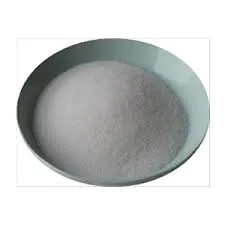- Afrikaans
- Albanian
- Amharic
- Arabic
- Armenian
- Azerbaijani
- Basque
- Belarusian
- Bengali
- Bosnian
- Bulgarian
- Catalan
- Cebuano
- Corsican
- Croatian
- Czech
- Danish
- Dutch
- English
- Esperanto
- Estonian
- Finnish
- French
- Frisian
- Galician
- Georgian
- German
- Greek
- Gujarati
- Haitian Creole
- hausa
- hawaiian
- Hebrew
- Hindi
- Miao
- Hungarian
- Icelandic
- igbo
- Indonesian
- irish
- Italian
- Japanese
- Javanese
- Kannada
- kazakh
- Khmer
- Rwandese
- Korean
- Kurdish
- Kyrgyz
- Lao
- Latin
- Latvian
- Lithuanian
- Luxembourgish
- Macedonian
- Malgashi
- Malay
- Malayalam
- Maltese
- Maori
- Marathi
- Mongolian
- Myanmar
- Nepali
- Norwegian
- Norwegian
- Occitan
- Pashto
- Persian
- Polish
- Portuguese
- Punjabi
- Romanian
- Russian
- Samoan
- Scottish Gaelic
- Serbian
- Sesotho
- Shona
- Sindhi
- Sinhala
- Slovak
- Slovenian
- Somali
- Spanish
- Sundanese
- Swahili
- Swedish
- Tagalog
- Tajik
- Tamil
- Tatar
- Telugu
- Thai
- Turkish
- Turkmen
- Ukrainian
- Urdu
- Uighur
- Uzbek
- Vietnamese
- Welsh
- Bantu
- Yiddish
- Yoruba
- Zulu
Dec . 20, 2024 10:41 Back to list
goat ivermectin injection dose
Understanding Goat Ivermectin Injection Dosage A Comprehensive Guide
Ivermectin is a widely used antiparasitic medication that is effective in treating various parasitic infections in animals, including goats. This guide aims to provide a clear understanding of the appropriate dosage, administration, and considerations when using ivermectin for goats.
What is Ivermectin?
Ivermectin is a member of the macrocyclic lactone class of drugs and is primarily effective against nematodes (roundworms) and ectoparasites such as mites and lice. It works by disrupting the neuromuscular function of parasites, leading to their paralysis and eventual death. In goats, ivermectin is critical for maintaining herd health and productivity, especially in environments where parasite load is significant.
Determining the Right Dosage
The dosage of ivermectin for goats can vary based on several factors, including the specific formulation (injectable, oral, topical), the weight of the animal, and the type of parasite being treated. The general guideline for ivermectin injection is
- Dosage The typical dosage of ivermectin for goats is 0.2 mg/kg (0.09 mg/lb) of body weight. This can be administered as a subcutaneous injection. - Weight Calculation To calculate the correct dosage, it is essential to accurately weigh your goat. Use a scale, and if that’s not possible, calculate an estimated weight using a tape measure.
For instance, if a goat weighs 50 kg (110 lbs), the dose would be
50 kg x 0.2 mg/kg = 10 mg of ivermectin
Ensure to check the concentration of the ivermectin solution being used, as it can vary by manufacturer.
Administration of Ivermectin Injection
goat ivermectin injection dose

1. Preparation Gather all necessary supplies, including the ivermectin injection, a syringe, and a needle. Ensure that the injection site is clean to minimize the risk of infection.
2. Injection Technique The injection should be administered subcutaneously, which means injecting under the layer of the skin. Common sites include the loose skin on the neck or behind the shoulder. Avoid injecting into muscle unless the manufacturer specifies otherwise.
3. Post-Administration Care After administering the injection, monitor the goat for any adverse reactions. While side effects are rare, they can include mild swelling at the injection site or temporary lethargy.
Considerations and Precautions
While ivermectin is generally safe for use in goats, there are several important considerations
- Body Condition and Health Status Ensure that the goat is healthy and in good condition prior to administration. Do not administer ivermectin to weak or malnourished animals without consulting a veterinarian.
- Timing of Treatment Consider the life cycle of the parasites. Timing treatments in relation to when parasites are most active can enhance efficacy.
- Withdrawal Period If the goats are being raised for meat production, it’s crucial to observe the recommended withdrawal period before slaughter. This period ensures that drug residues are eliminated from the animal’s system to comply with food safety regulations.
Conclusion
Understanding the proper dosage and administration of ivermectin in goats is crucial for effective parasite management. By following recommended guidelines and consulting with a veterinarian when necessary, goat owners can ensure the health and productivity of their livestock. Regular monitoring and preventive measures can significantly reduce the risk of parasitic infections, leading to a healthier herd and increased productivity.
-
Guide to Oxytetracycline Injection
NewsMar.27,2025
-
Guide to Colistin Sulphate
NewsMar.27,2025
-
Gentamicin Sulfate: Uses, Price, And Key Information
NewsMar.27,2025
-
Enrofloxacin Injection: Uses, Price, And Supplier Information
NewsMar.27,2025
-
Dexamethasone Sodium Phosphate Injection: Uses, Price, And Key Information
NewsMar.27,2025
-
Albendazole Tablet: Uses, Dosage, Cost, And Key Information
NewsMar.27,2025













